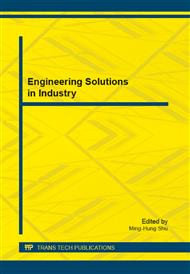p.222
p.231
p.235
p.239
p.244
p.249
p.253
p.258
p.265
Service Selection Based on Rule and Statistics Model in WoT Smart Home
Abstract:
As the development of WoT(Web of Things), a large mount of services emerge. How to make full use of these services is a hot research area nowadays. This paper focuses on making these services more valuable in WoT Smart Home scenario. In this paper, we propose a model called service selection model based on rule and statistics into WoT Smart Home scenario. It is a combination of rule model and statistics model. It not only automatizes the service selection process by adopting statistics algorithm, but also dramatically improves the accuracy of this process by combining rule and statistics. Further more, it saves efforts of the annotation of service rules greatly. We carry out some experiments to verify the efficiency of this model by comparing with rule model and statistics respectively. The results show that the combination model can efficiently and precisely select services.
Info:
Periodical:
Pages:
244-248
Citation:
Online since:
October 2014
Authors:
Keywords:
Price:
Сopyright:
© 2014 Trans Tech Publications Ltd. All Rights Reserved
Share:
Citation:


